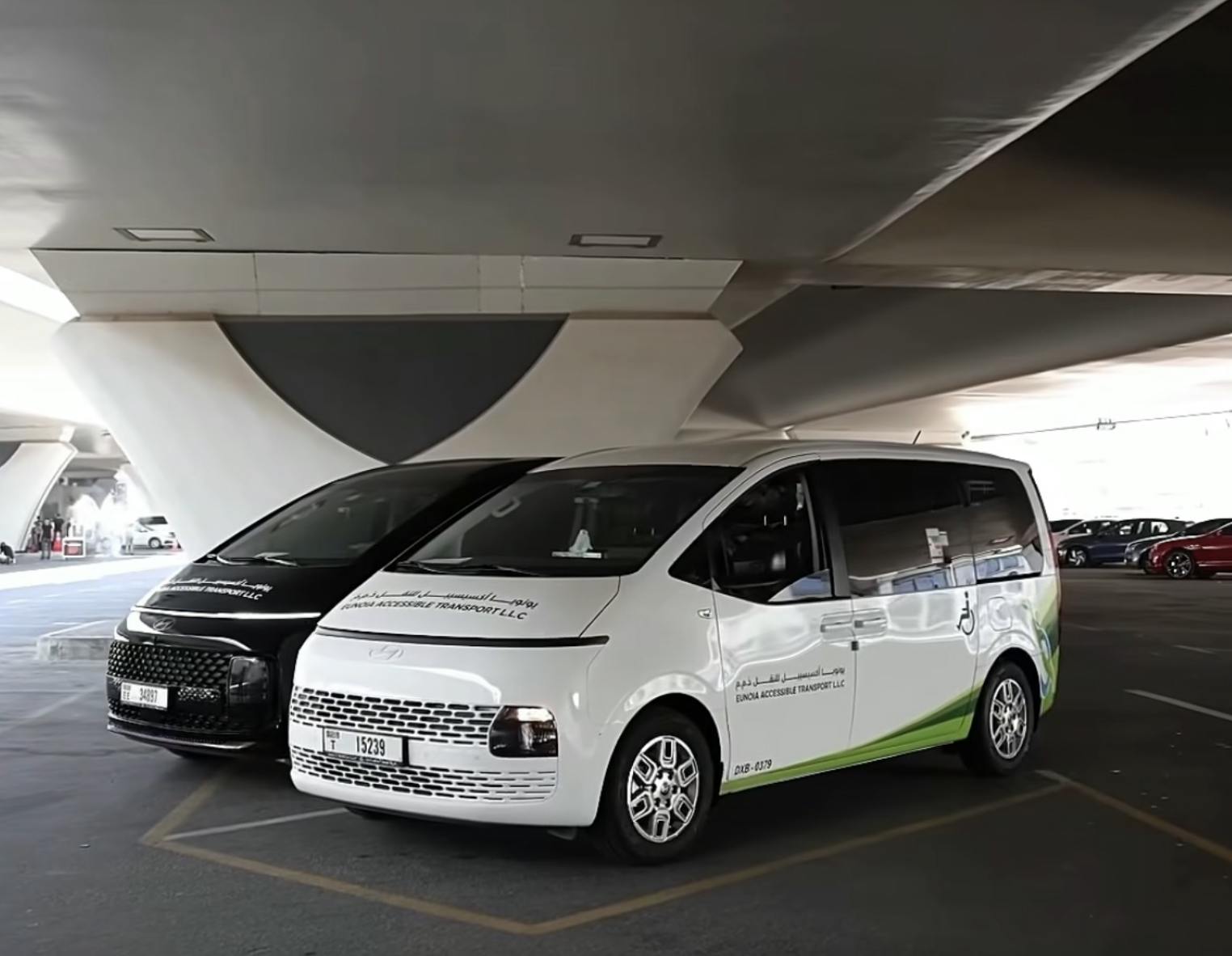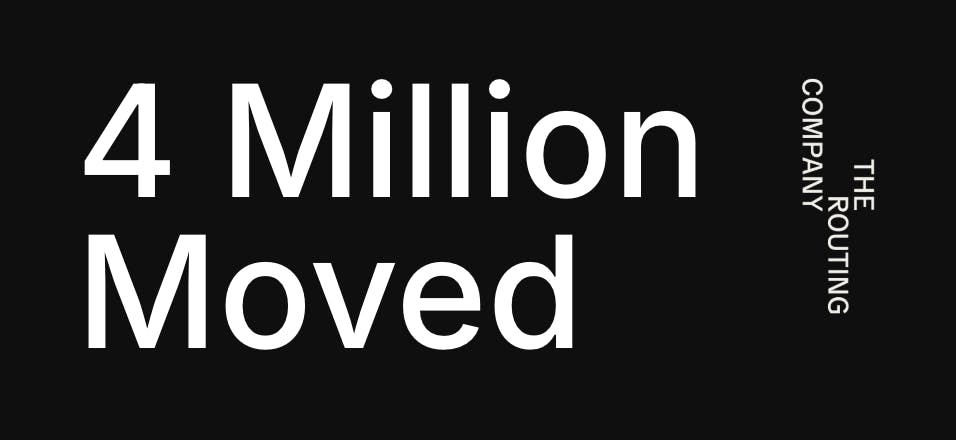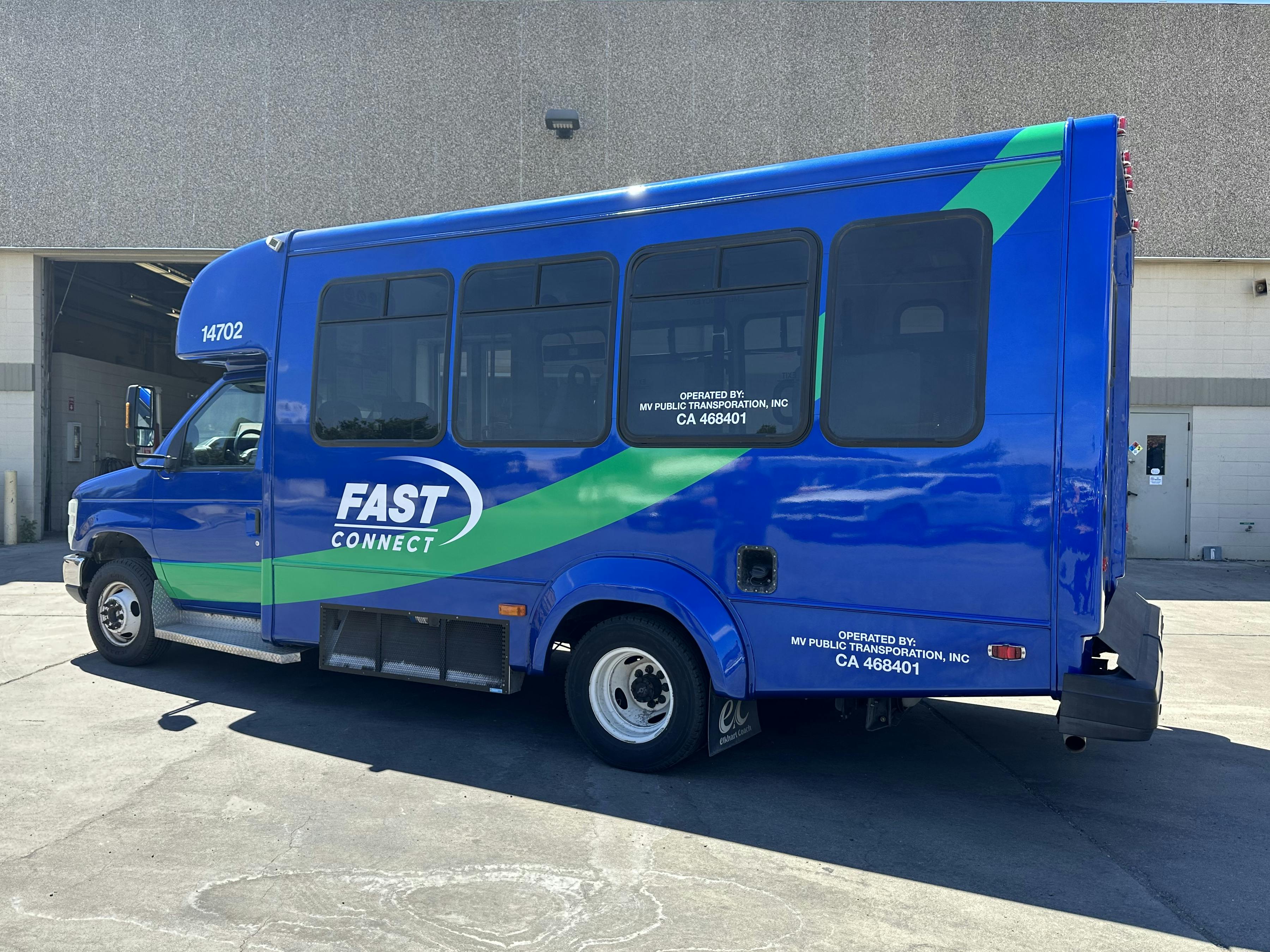
Reflecting on a year of Pingo Access™ – from launch to beyond
As 2023 draws to a close, TRC’s Senior Product Manager, Jackson Lester, reflects on TRC’s undertaking to build a transformational paratransit platform, and how far TRC has come in realizing its vision over the past year – including helping to double ridership in Fairfield, California.
Paratransit forms the baseline of mobility worldwide. It's a lifeline for people living with disabilities.
And innovations that have expanded mobility for much of society – like micro mobility and ridesharing – have largely left riders with disabilities behind.
So when considering the proven efficiency of our ridesharing technology at The Routing Company, we realized the potential of that technology in the hands of paratransit operators; empowering them to make their critical services more accessible, reliable, and efficient for the communities they serve.
That’s why we spent more than the past year learning from seasoned paratransit professionals, diving into better understand what they really need from technology used for operating transit services. Then, we worked together to turn their needs and vision into a reality.
Enter the launch of Pingo Access™ – a feature within the Pingo platform that seamlessly commingles and delivers Americans with Disabilities Act (“ADA”) paratransit services in multiple modes. For reference, commingled transit services mean vehicles are used for both paratransit and regular on-demand services at the same time.
What we learned during research and development
During the research process in developing Pingo Access™, we quickly realized that efficiency is just one part of what paratransit operators need.
They also need to understand and apply unique local context (into paratransit services) to be successful. That’s why we focused our efforts around applying context in two key ways:
- To best understand how things are going, what needs an operator’s current attention, and how things went – thus enabling management of efficient and reliable service, and
- Integrating that information (into Pingo Access™) by tailoring service to unique local context, addressing local dynamic transportation needs flexibly with the right tools for the job.
How we put learnings directly into motion
With localized context in mind, we have continued iterating Pingo Access™ since launch to ensure it is most effective for paratransit operators in their unique settings. I want to highlight three key features we’ve implemented to bring more context into paratransit operations:
1) Leveraging Pingo Analytics™ to understand operations
Following this summer’s release of Pingo Analytics™, we've seen how powerfully customers are using the tool to build context into their operations. With a newfound ability to create custom reports, operators can now leverage a nuanced understanding of how service is working.
Whether that’s understanding how each serviceworks in a commingled setting, or when they need to shift their service hours throughout the day to maintain service quality, the context our data provides has helped our customers operate more effectively.
Pingo Analytics™ is not just providing data; it's offering a lens for our customers to see and understand their operations at a deeper, data-driven level. This has led to more informed decisions and ultimately, more responsive and efficient transit services.
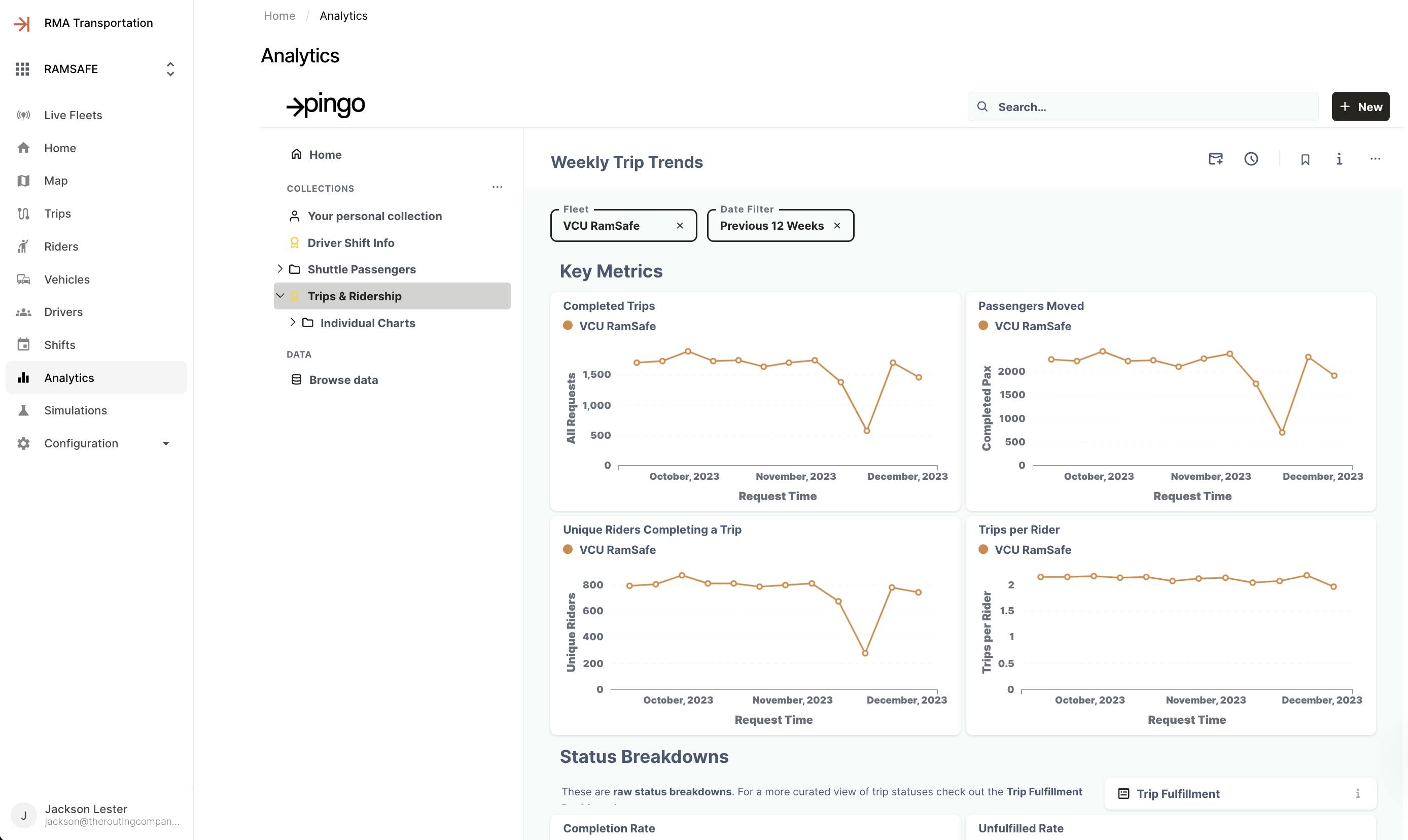
2) Using “drawers” to lend local context
One critical insight we gained from paratransit operators is that the closer we put the operations team to information they need, the more effectively they can do their jobs.
That’s why we’ve started introducing “drawers” throughout the Pingo Dashboard – consider them independent data repositories, with each containing information about a specific element within the system (such as a rider, trip, or shift).
These drawers, available with a single click, allow users to deep-dive into key information without having to leave the page they’re already on. This includes all core details about that element, including its history, to provide all of the information users need to understand its context.
To date we have introduced drawers for trips and shifts, but in future we will introduce drawers for drivers, riders, scheduled routes, vehicles, and more. This will allow users to get context about even more elements, just one click away.
These drawers can also be a powerful way to bring cross-functional context across the whole dashboard. For example:
- Want to know more about a rider, while looking at a trip in the trip manager? Open the rider details drawer right in the trip manager.
- Want to know what other trips are on a shift, while reviewing the map view? Open the shift details drawer right in the map view.
- Want to know more about a trip from a shift, while looking at shift details in the shift manager? Open the trip details drawer right in the shift manager.

With Pingo Analytics™ and the drawers feature in the dashboard, we’re helping users understand their operation’s context better than ever before. And with commingled services, we’re allowing them to flexibly apply that context to how they operate.
3) Operating commingled rides in a single fleet with “Services”
Within Pingo, the “Services” feature allows customers to flexibly and simultaneously manage several distinct transportation offerings with the same set of drivers and vehicles.
The way our customers can differentiate services empowers them to run their systems the way that makes sense given their unique contexts. And this allows them to competently accommodate diverse mobility needs like campus transportation, public on-demand service, ADA paratransit, or all of the above.
We’ve built our system to allow commingled services to consider and vary on:
- Who is eligible for each service,
- What fare structure and and categories apply,
- When and where the service is available,
- Which zones get snapped to snap points vs. allowing door-to-door service,
- Which shifts are available to serve each of the services,
- How to assign trips based on unique parameters for our algorithm,
- How riders can book on-demand and/or in advance, and
- Whether booking through the app and/or call center is allowed.
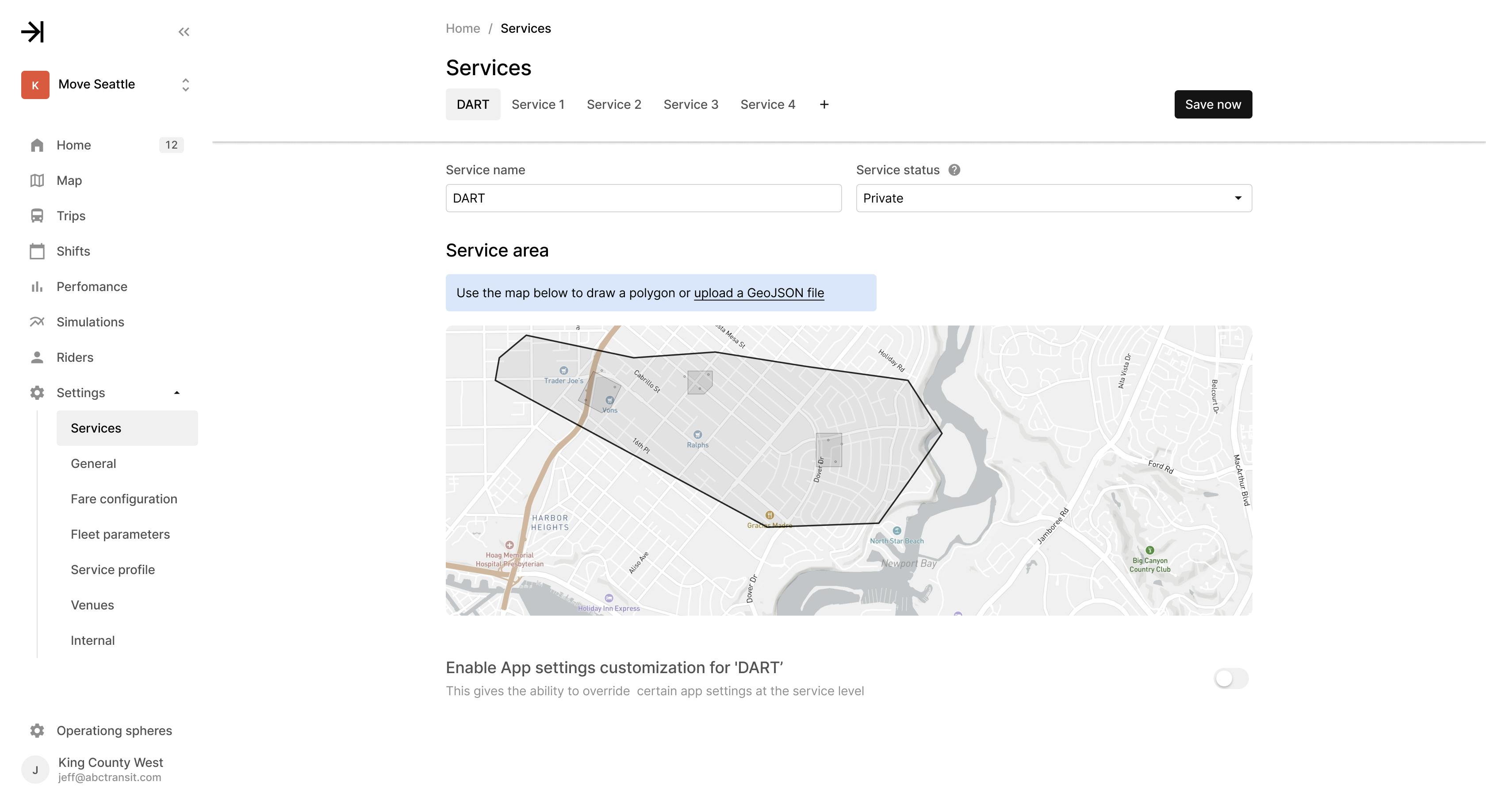
This level of configurability provides incredible flexibility around how to operate each service while still allowing the services to be shared. While in the past, agencies have operated these kinds of services in silos, our system allows them to be shared when and where that aligns with program goals.
And, we have seen that bringing services together helps them operate as a system that is more than just the sum of its parts.
Pingo Access™ amplifies ridership in real-world deployments
In our commingled service with FAST, the city of Fairfield, California’s transit system, we have seen a substantial number of their paratransit riders using the commingled public on-demand service instead for the added flexibility of booking on-demand.
In fact, FAST has seen more than doubled on-demand ridership since launching commingled paratransit service with TRC in September.
The service, using existing paratransit vehicles, replaced unproductive fixed routes and since launch has seen more than 500 app downloads, over 60% booking within the Ride Pingo™ app (versus call-ins), and more than 5,000 people moved. Learn more about the FAST deployment here.
What’s next for Pingo Access™?
Heading into 2024, we are proud of the products we have already built to make Pingo Access™ a reality.
By focusing on understanding and applying context, we've empowered operators with tools like Pingo Analytics, dashboard drawers, and commingled services, leading to smarter and more responsive transit services.
We're committed to taking Pingo Access™ further by enhancing these tools, and introducing exciting new features that will make operating commingled paratransit services even more intuitive.

